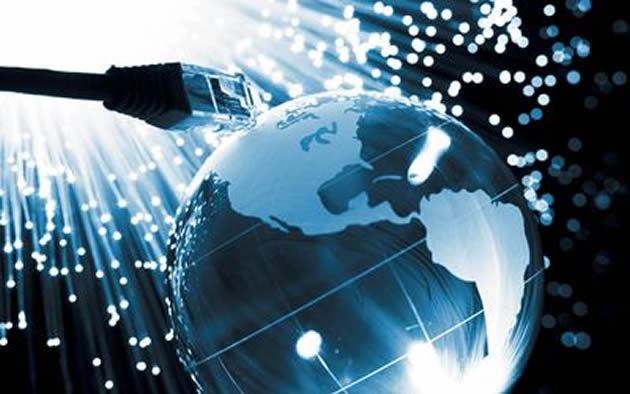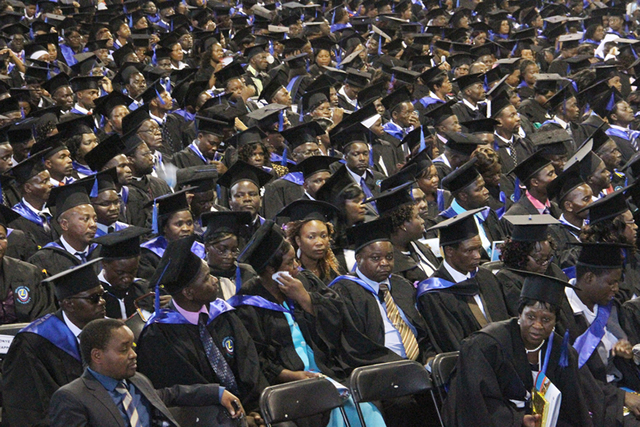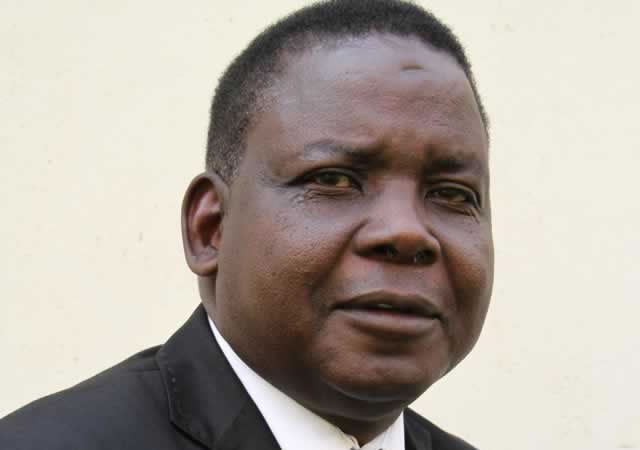Tech giants target African Internet boost chance

Tom Jackson Correspondent
According to the World Bank, a 10 percent increase in broadband connectivity can result in a 1.38 percent increase in GDP. The Technology and Social Change Group at the University of Washington’s Information School says community access to ICT is vital if people are to be connected to information and skills.
DESPITE the astonishing growth of the worldwide web since its inception, over two decades ago, only 26,5 percent of the African population is connected to the Internet, with a recent United Nations report saying Sub-Saharan African countries accounted for eight of the 10 that have the lowest levels of Internet availability in the world.
According to the World Bank, a 10 percent increase in broadband connectivity can result in a 1,38 percent increase in GDP. The Technology and Social Change Group at the University of Washington’s Information School says community access to ICT is vital if people are to be connected to information and skills. With this in mind, a number of global tech corporates have been rolling out initiatives aimed at bringing down the cost of connectivity and making it available in more rural areas. This is not a CSR (Corporate Social Responsibility) initiative — these companies realise their future customer acquisition strategies depend on getting more Africans online.
Google has launched Project Loon — which involves signals submitted from balloons 18 kilometres above the earth being received by specialised internet aerials.
Facebook has pioneered Internet.org, a zero-rated app offering users access to services such as Facebook, the BBC and Wikipedia in countries such as Kenya, Zambia and Ghana. Microsoft is experimenting with TV white space technology, which utilises unused radio spectrum to provide Wi-Fi connectivity.
Bridging the internet gap
Increasingly, however, there are local solutions to this most local of problems. One of these is the BRCK, originally conceived by Kenyan crowdmapping company Ushahidi but since spun out as a separate entity.
The BRCK is a rugged, self-powered mobile Wi-Fi device, able to connect people to the internet in areas of the world with poor infrastructure. The modem-cum-router allows for internet connectivity in rural areas without access to fibre or power.
For BRCK co-founder Erik Hersman, tackling the digital divide in rural areas is key to increasing access to online services across Africa as a whole.
“The digital divide in Africa is not between rich and poor, it’s between urban and rural,” Hersman says.
“This isn’t just due to lack of population density, which scares away the telcos and their 3G-enabled towers, which is how the internet gets to rural areas. It’s also due to the lack of capital for them to upgrade their personal devices. You are more likely to find a smartphone in an urban centre like Nairobi than you are in a tertiary town in central Kenya.”
The prototyping of the BRCK began in 2011, and went on for a year and a half. This was the easy part, however, with Hersman saying the real challenge and expense then came at the production stage.
Luckily, the idea proved popular with investors large and small. The company tested the market with a Kickstarter campaign, which raised $72 000, before seeking a full investment round last year, during which it raised $1,2 million. The $199 BRCK device is now being shipped, with Hersman saying uptake has been fantastic.
“We have sold thousands of units into 54 countries across the world to date,” he says.
Though it is priced for the African market, the company still makes a profit from each device, with Hersman saying the company has identified certain key sectors — education and SMEs (Small and Medium Enterprises) — to enable it to scale initially.
“There’s a large and growing demand for edtech (educational technology) solutions across Africa, and the BRCK as the key aid for both content storage and connectivity continues to be the right answer for injecting technology into schools,” he says.
“In the small business space, we find there are a great number of companies that need basic, reliable internet coverage that stays up when the power goes out and can switch between multiple sources of internet connectivity into the BRCK router depending on uptime, cost and speed.”
The BRCK is designed and engineered in Nairobi, with components from Asia, with final assembly taking place in the United States.
Hersman says he would like to assemble the device in Kenya, but cannot do so at this point due to expensive duties imposed by the government on local assembly of hardware.
Nonetheless, the BRCK is a truly African solution to a very African problem, with Hersman saying the fact that it is designed and engineered in Kenya means it is adaptable to local conditions. “We have to deal with the power outages and intermittent spikes as we build it, meaning we designed it to work with backup batteries and a smart power system to handle everything from solar and car batteries to not frying when you get a 400V power spike,” he says, adding:
“When we think of connectivity, we don’t think of landlines and cable first, we think of 3G, SIM cards and antenna jacks to amplify the signal gain. When dealing with the high cost of data and the speeds at which it travels, we build caching mechanisms into the device to store more content locally. It’s all of these together that make the BRCK different and the right device for anyone living in a place with poor infrastructure.”
He believes BRCK has demonstrated that local companies are better placed to solve problems around internet connectivity in Africa, in spite of the huge resources pumped in by the likes of Google and Microsoft to tackling the issue.
Engineered in Africa
“We questioned why we use the technology made for the United States and Europe when we live in Africa. The barriers to entry for local companies building technology that works for us have been lowered, so more and more we’re going to see both software and hardware solutions designed and engineered here for our own needs,” he says.
“In the future, I can imagine that even more of the final manufacturing will happen in Africa as well.”
The solution to the problem, however, is likely to be very collaborative, with Microsoft having achieved more than most through its TV white spaces trials across Africa. TV white space technology utilises unused radio spectrum to provide Wi-Fi connectivity at one-tenth of the cost of 4G. Microsoft is backing nine projects across Africa, and plans to increase this to 20 by next year. Sean Sealey, chief operating officer of Spectra Wireless, which is working with Microsoft in Ghana, says the benefit of white space is that there is no signal interference.
“It is very reliable, it has a long distance. Over the long term it will be beneficial to acquire more customers. Where the tech is beneficial is in semi-rural areas where we can connect the people that aren’t really covered by 3G services from the mobile operators,” he says.
Making online access sustainable in rural areas is an ongoing battle, says Sealey, but one that is gradually being won as varying types of solutions, such as the BRCK and white space technology, join the fray.
“You definitely have to be more creative and sell something in lower increments. It is difficult when you’re trying to sell an unlimited service,” he says.
Tom Jackson is a tech and business journalist based in South Africa. A UK-trained reporter, he is committed to the dream of African development through technology. This article is reproduced from http://newafricanmagazine.com.








Comments